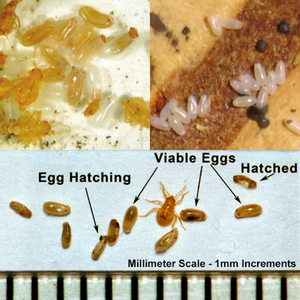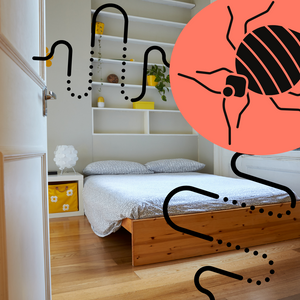Does a Bed Bug CO2 Treatment Really Help to Control an Infestation?

 Carbon dioxide gas (CO2) plays an important role in controlling bed bugs. It works as an attractant, which makes it beneficial for trapping and monitoring bed bugs as well as other blood-sucking insects that are attracted to it.
Carbon dioxide gas (CO2) plays an important role in controlling bed bugs. It works as an attractant, which makes it beneficial for trapping and monitoring bed bugs as well as other blood-sucking insects that are attracted to it.
With this fact in mind, many people are searching for CO2 treatments that they can use to help exterminate bed bugs from their home. Yes, CO2 may not kill bed bugs, but it lures them out of their hiding places and captures them. This will prevent them from returning to their colonies and will stop their population from increasing. However, there is no such thing as a CO2 bed bug treatment, but there are CO2 traps that you can use for this process.
Remember, getting rid of bed bugs is a collective effort!
These traps help to detect a bed bug infestation, monitor bed bugs and stop them from reaching and biting you. It mimics the sleeping body, detecting bed bugs effectively. Aside from monitoring early stages of an infestation, it can also be used to verify the effectiveness of the treatments that you have been using, or the effectiveness of a professional extermination. Check out overnight bed bug CO2 traps that are easy to use for monitoring and detection.
What Makes Bed Bug CO2 Treatments Effective?
Some CO2 traps effectively combine CO2 and heat, which lures bed bugs. By mimicking the human body, bed bugs track the CO2 emitted from the trap which attracts them so that they get into the trap. Most traps have replaceable glue strips which prevent bed bugs from escaping once they get in. This is one way to detect how heavily infested a space is and monitor the presence of bed bugs.
Popular options such as Beapco’s Ultimate CO2 Trap or Bed Bug Beacon are both active monitors that allow you to check on the bed bugs trapped while you are away or while you sleep. Placing them near your bed prevents bed bugs from tracing the CO2 coming from your body. Instead, they trace the CO2 released by the trap.
What makes CO2 traps stand out more than DIY or homemade CO2 traps is that they are easy to use and are cost-effective, specifically designed to catch bed bugs. Unlike other traps, there are many procedures and materials that you need to prepare such as dry ice. With these traps, simply follow the instructions, install and let it do its thing.
How to Take Advantage of a CO2 Treatment for Bed Bugs
Though many would suggest that you get heat treatments, they are only necessary if you’ve confirmed the presence of bed bugs. Some also consider using CO2 fumigations as recommended by their pest control company. It’s best that you consider such options if your efforts to achieve bed bug control didn’t work or had worsened the situation. Using traps, the CO2 gas will lure bed bugs and trap them without the need to use your body as the lure.
With the various CO2 traps that you can use nowadays, you can easily use these treatments even when you are sleeping in the same room as where you set up the traps. There are traps that you can slip in between the mattress and box spring while you sleep. Instead of going straight to you, they will crawl to the trap because of the carbon dioxide it emits, enter the trap, and get stuck on the glue strip inside the trap.
If you’re looking for various CO2 traps, check out our detection and monitoring traps. Feel free to send us an email or call us to get expert advice on what products can help you to deal with your bed bug problems.






